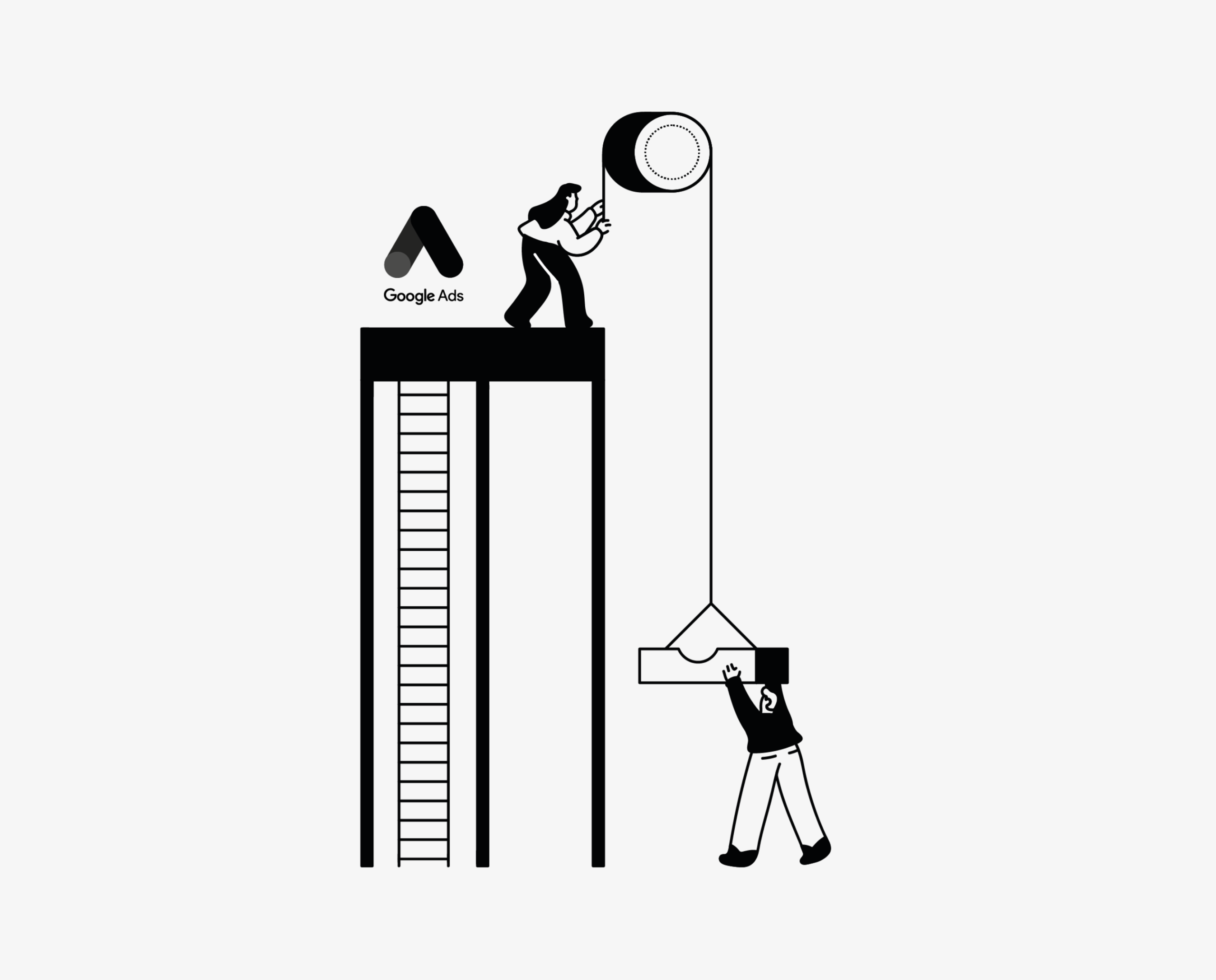Our simplified e-commerce ecosystem
It is vital for a company to understand the electronic commerce ecosystem. However, we recognize that once you are thrown into the creation of a business, it is easy to get lost amidst the chaos. Hence, we have dissected the digital marketing biosphere to help you find your bearings.
Of course, it is not necessary to develop every single strategy. Still, establishing a balance between different domains will allow you to make up for what you cannot fulfill. Also, it will help you find a strong, sustainable position in your market.
Here are seven types of marketing tactics to develop for your business:
Display Marketing
Advertising banners, pop-ups, videos, and hover ads are all forms of display marketing. Indeed, it is on websites, applications, and even on social networks. Also, there are two major players: advertisers and publishers. Advertisers invest in marketing campaigns to promote their products or services. Publishers are administrators who help advertisers by running marketing campaigns on their websites.
Furthermore, various “departments” expand marketing campaigns to reach the target audience. There are two types of investment strategies: the auction marketing plan, in which an advertiser sets a price for the advertisement’s broadcast, and the retargeting campaign which seeks clients who have already shown an interest in the brand (via online searches, interactions, etc.) Moreover, cookies play a central role in display marketing because they allow publishers to target and promote relevant advertisements to users. The objective is to generate an interaction (a click) with the ad to attract the user to your website. As a result, the visual quality is essential.
Mobile Marketing
Mobile marketing is the entirety of marketing strategies based on cell phone use. Since the advent of smartphones, mobile marketing has taken off. Gone are the days when mobile marketing consisted of only sending an SMS. Today, the evolution of mobile technology (4G, MMS, smartphones) provides various opportunities for advertisers. Compared to other strategies, the advantage mobile marketing offers is the proximity to the client. With geolocation, beacons, apps, connected devices, micro-moment marketing, mobile payments and more, there are many possibilities a brand can employ and integrate into its marketing strategy to maximize its relationship with its client. Hence, you should pay attention to mobile marketing as it promises a bright future.
Content Marketing
Content marketing is a practice that consists of a business creating and distributing content at the disposal of leads or clients intending to develop their activity. It is essential to distinguish content marketing from advertising. The objective is not to sell (directly) but to inform and engage the consumer to influence their buying process. Content marketing operates at different levels, such as understanding the brand’s universe, accelerating the buying process, increasing search engine optimization, etc. A successful content marketing strategy defines and understands its audience to promote relevant content. For example, if you sell sports accessories, you could suggest a video like: “How to choose hiking boots” or an article suggesting: “Five tips for preparing for a marathon.” You can choose the type of content that suits you best (video, photos, articles, descriptions, etc.). In the end, the objective is to incite leads and clients to consume your product or services.
Social Media Marketing
Social media marketing is not only about publishing a photo or a tweet. Indeed, social media networks are considered full-blown media: they each have distinctive traits. Platforms like Facebook, LinkedIn, Snapchat, Instagram, and Twitter incite discussion and exchange. Thus, a brand must respect these principles while respecting the role and characteristics of each social platform. The objective is to create a bond with the platform’s users. One of the challenges is to find a way for different networks adopted by the brand, to complement one another while harnessing and portraying the framework of the brand’s story. As a result, this will establish coherence in your content across multiple platforms. The interaction between a brand and its fans is the key to success. Social media platforms are rich marketing tools for managing a brand’s communication.
Search Marketing
SEO, SEM, SEA… do they speak to you? That is what we call search marketing. Search marketing regroups all indexing activity of a brand’s content across search engines, comparison shopping engines, referral platforms, applications, and what consumers write and communicate across social media networks. Social media marketing is one of the most important key players in digital communication and the key to success: words. Search engines will index your words. Also, images and videos are elements that can be indexed. There are two ways to appear in search engine results: paid or organic (free charge). Within the framework of Search Engine Marketing (SEO), the method of referencing is natural. Precisely, one obtains a positioning on the search engines thanks to thea optimization of the content present on its site. Search Engine Advertising (SEA) is a method that allows, via a dynamic bidding system, to position favourably a website, commercial offers or other types of content on search engines. That is equivalent to buying an advertising presence on search engines.
Data Marketing
Data is a gold mine for any business that can properly collect it. It enables you to understand your client, orient your strategy and achieve your objectives. Data marketing rests on using your clients’ data. A database is crucial for a business. To fully comprehend your client, consider how the information will be collected. Your database will help you create a strategy aligning with your clients who have already shown interest in your brand and are likely to purchase more of your products or services. Various factors, such as habits, purchase frequency, and average basket, will ensure that these clients receive personal attention, giving them a sense of exclusivity. Have a new product? Inform your clients. Your database enables you to reach your potential clients at the lowest cost and reactivate dormant clients. Remember: it is less expensive to retain a client than acquire one. Keep in mind the importance of ethical data collection and data treatment.
Performance Marketing
Have you ever heard of CPM, CPC, CRA, or ROI? When you invest in an internet advertisement, you must measure and understand the cost. Performance marketing refers to the techniques that allow you to gauge a campaign’s results. Understanding the performance of your advertisement investments will allow you to select the platforms best suited to obtaining your target. Performance marketing is unique to each company. A business can have an excellent cost per click (CPC or PPC) on Google while having a high CPC on a social platform. A new business could have a hard time determining what works best and brings in the most. You need to test metrics and stay attentive to them. This practice will help you orient your future strategic decisions. Here is a small lexicon of current terms:
| CPM: Cost per mile, meaning cost per thousand views or clicks | The price varies according to the advertisement’s frequency |
| CPC: Cost per click | The cost is defined according to the number of times a user clicks on the advertisement |
| CPL: Cost per lead | The cost is defined by the number of times a client provides contact information |
| CPA: Cost per acquisition, or cost per action | This consists of billing the advertiser according to the obtained results during a campaign (online purchases, subscription to newsletters, etc.) |
| ROI: Return on investment | This is the amount of money earned or lost compared to the initial investment of the marketing campaign |
CPM: Cost per mile, meaning cost per thousand views or clicks – The price varies according to the advertisement’s frequency
CPC: Cost per click – The cost is defined according to the number of times a user clicks on the advertisement
CPL: Cost per lead – The cost is defined by the number of times a client provides contact information
CPA: Cost per acquisition, or cost per action – This consists of billing the advertiser according to the obtained results during a campaign (online purchases, subscription to newsletters, etc.)
ROI: Return on investment – This is the amount of money earned or lost compared to the initial investment of the marketing campaign
Main keypoints to remember
Digital marketing requires juggling all these factors at once. Every segment complements the other. It is important to reflect on your strategy from a global perspective to maximize the potential of each domain. Defining your objectives, your audience and your environment accurately will facilitate your strategic decisions.











